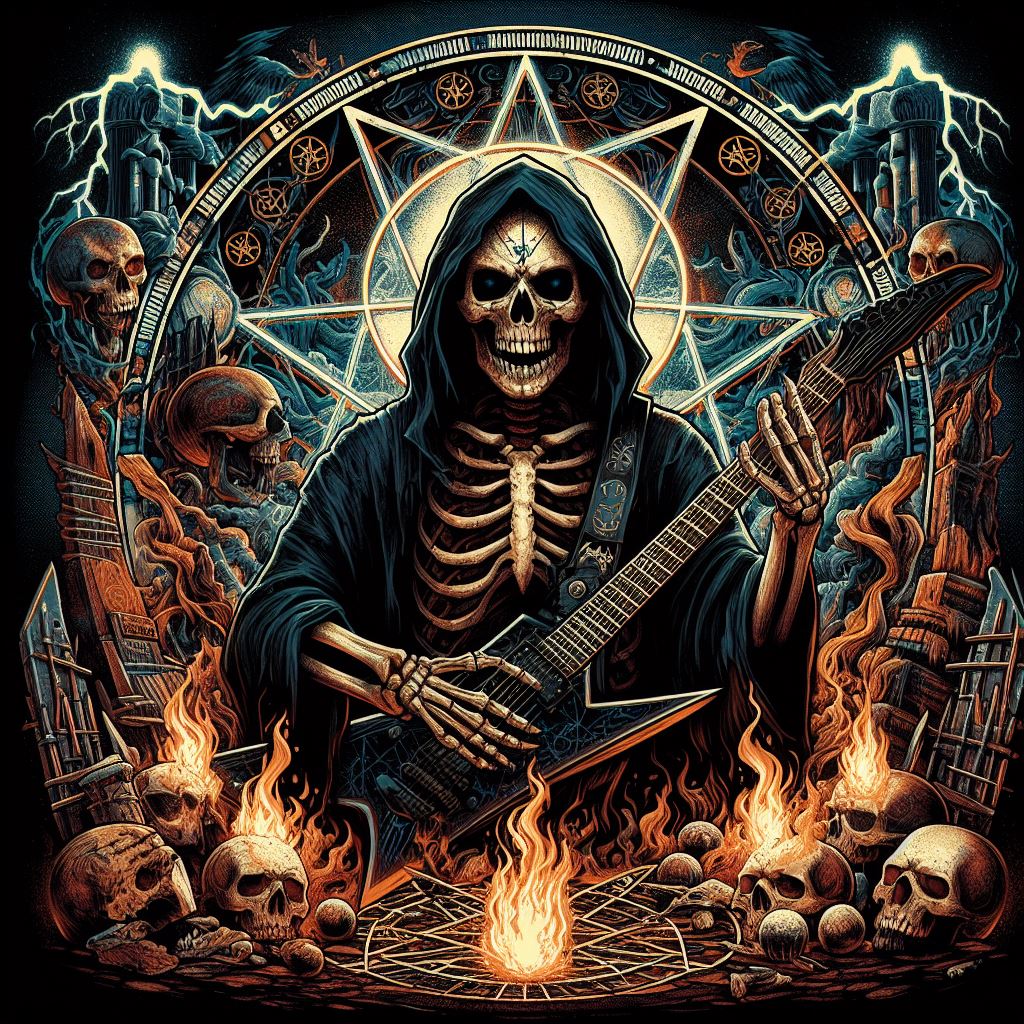Signum Regis, a name synonymous with soaring vocals, galloping riffs, and unwavering commitment to traditional heavy metal, has stood strong for over three decades. Hailing from the fertile grounds of the German metal scene, they’ve carved a unique path, drawing inspiration from the genre’s giants while injecting their own brand of epic grandeur.
Early Days and Teutonic Influences (1989-1994):
Signum Regis’ story begins in the late 1980s, a time when the flame of traditional heavy metal burned brightly in Germany. Guitarist and founding member Thomen Stauch, fueled by his passion for bands like Judas Priest, Iron Maiden, and Accept, sought to forge his own path within the genre. Joined by vocalist Ronnie Atkins (later known as Ronnie Romero of Rainbow fame), bassist Markus butterknife, and drummer Markus Dederer, Signum Regis was born.
Their 1989 debut album, “Presented by Signum Regis,” was an undeniable homage to the titans of traditional heavy metal. Tracks like “The Magician” and “Graveyard Symphony” showcased their strengths – Stauch’s soaring guitar riffs, Atkins’ powerful vocals that effortlessly transitioned between high-pitched screams and mid-range growls, and a rhythm section that laid down a galloping foundation.
Signum Regis quickly gained recognition within the German metal scene. Their sophomore album, “Applause of Heaven” (1991), solidified their reputation. Tracks like the title track and “The Very Last Page” displayed a band growing in confidence, crafting songs that were both catchy and anthemic.
Concept Albums and International Acclaim (1994-2000):
By the mid-90s, Signum Regis began exploring more ambitious territory. Their 1994 concept album, “Damnatus,” a thrilling tale of good versus evil, showcased their ability to weave intricate narratives into their music. Tracks like “The Trial” and “The Heretic” displayed a newfound depth to their songwriting, while still retaining their signature brand of heavy metal grandeur.
This newfound depth, coupled with their consistently impressive musicianship, propelled Signum Regis to international acclaim. Their 1997 album, “The Mask,” a concept album loosely based on the life of Edgar Allan Poe, further cemented their place amongst the elite of traditional heavy metal. Tracks like “The Raven” and “Ligeia” perfectly captured the gothic atmosphere of Poe’s works, showcasing the band’s ability to seamlessly blend musicality with storytelling.
Lineup Shifts and Continued Dedication (2000-Present):
The new millennium brought about lineup changes for Signum Regis. Atkins’ departure in 1999 was a significant blow, but the band persevered. Stauch, the band’s unwavering leader, recruited new vocalists and continued to release critically acclaimed albums like “Heldentum” (2001) and “Vanished in Dreams” (2006). These albums showcased a band unwilling to rest on their laurels, experimenting with symphonic elements and incorporating a touch of progressive metal into their sound.
Despite lineup changes, Signum Regis’ dedication to traditional heavy metal has never wavered. Their most recent album, “The Healer” (2018), is a testament to their enduring legacy. It features a renewed focus on catchy hooks, soaring vocals, and powerful riffs, proving that Signum Regis remains a vital force in the world of metal.
Signum Regis’ Legacy:
Signum Regis stands as a beacon for traditional heavy metal. Their unwavering commitment to the genre’s core tenets – soaring vocals, galloping riffs, and epic storytelling – has earned them a dedicated fanbase worldwide. They have consistently delivered high-quality albums, demonstrating their ability to evolve while staying true to their roots.

Leave a Reply
You must be logged in to post a comment.